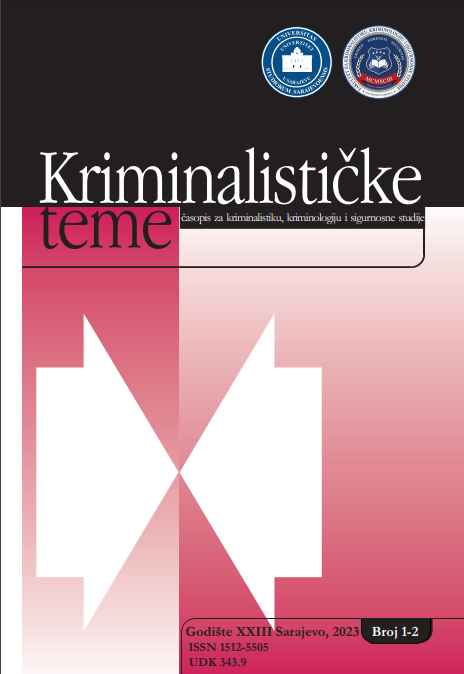SOCIO-DEMOGRAFSKI KORELATI SOCIJALNE DEZORGANIZACIJE I KVALITETE SUSJEDSTVA
SOCIO-DEMOGRAPHIC CORRELATES OF SOCIAL DISORGANIZATION AND NEIGHBORHOOD QUALITY
Author(s): Alisabri Šabani, Elvira ČekićSubject(s): Social development, Demography and human biology, Rural and urban sociology, Sociology of Culture
Published by: Fakultet za kriminalistiku, kriminologiju i sigurnosne studije Univerziteta u Sarajevu
Keywords: social disorganization; neighborhood quality; collective housing; skyscraper; tenants;
Summary/Abstract: The aim of the research was to determine the relationship between socio-demographic variables of the respondents and the perception of social disorganization related to housing conditions and the quality of the neighborhood. The research was conducted in December 2022 on a sample of 102 respondents (49 male and 53 female), average age 43. The following scales and questionnaires were applied: Sociodemographic Variables Questionnaire, Social Organization Inventory and Social Perception Scale. The results of the research showed that socio-demographic variables have influence on the perception of social disorganization and neighborhood quality. It was found that there is a statistically significant positive association with the social disorganization variable in the direction of the impact of tenants on the quality of collective living, emotional ties of tenants, the need to fulfill requests, neighborhood stability and informal control. The data indicate that all individual items of the subtest of the neighborhood variable showed a statistically significant positive association with tenants’ external connections, with institutions related to the quality of housing, pro-social norms of collective housing, basic participation of tenants in skyscraper activities, informal participation of tenants in skyscraper activities and formal participation of tenants in skyscraper activities. Factor analysis revealed three dominant factors: involvement of tenants in activities of common interest, connection and assistance among tenants, and opportunities to improve living conditions for all tenants by engaging in the local community. The obtained results suggest positive attitudes related to housing values that arise from social organization and neighborhood quality. The paper is concluded with recommendations for future research and directions.
Journal: Kriminalističke teme – Časopis za kriminalistiku, kriminologiju i sigurnosne studije
- Issue Year: XXIII/2023
- Issue No: 1-2
- Page Range: 19-43
- Page Count: 26
- Language: Bosnian, Croatian, Serbian

